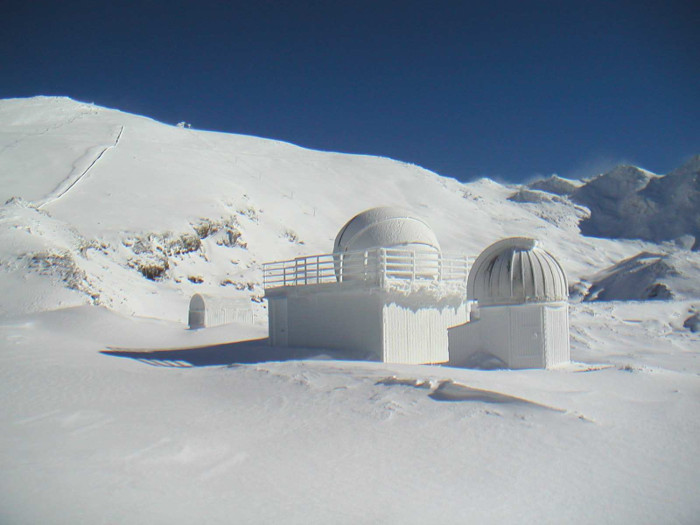BOOTES-IR (Burst and Optical Transient Exploring Systemin the near-InfraRed) is the extension of the BOOTES project towards near-infrared (IR) wavelengths thanks to nIR camera developed in the context of the Spain's Programa Nacional de Astronomía y Astrofísica AyA 2002-0802.
The enclosure was built atop Sierra Nevada in the Summer of 2003. The telescope was installed at the end of 2004 and first (optical) light was obtained in February 2005. Since then the telescope is in commissioning phase and operating with an optical camera, and responding to some alerts within 20-30 s after occurrence. The nIR camera has had first light in Summer 2006. Thus, BOOTES-IR will be the third astronomical nIR observatory of this kind, following REM (opt/nIR) at ESO La Silla Observatory in Chile and PAIRITEL (nIR) at Mt. Hopkins in Arizona, USA , but extending its wavelength coverage in the blue optical range.

Telescope and NIR camera
The telescope was designed by ASTELCO GmBH (Munich, Germany) and delivered in November 2004. It is a 0.6m Ritchey-Chr`etien working at f/8. Its direct drives allow it to slew at a speed of 10 ◦ per second, being capable of pointing any part of the sky within 20 seconds, with a typical slew time of 5 seconds. It has two Nasmyth foci, one of which is occupied by both the nIR and optical cameras. Initially the second Nasmyth will be idle, although future instrumentation is foreseen.
The BOOTES-IR camera, also dubbed BIRCAM, was designed by LT Calcoli SAS (Merate, Italy), in collabo- ration with optical designers of Osservatorio Astronomico di Brera (Merate, Italy), following the requirements of the BOOTES-IR Team, under a very fruitful collaboration. BIRCAM is placed at the Nasmyth focal station of the 60 cm telescope. It has high transmission optics and it is equipped with a high readout speed controller. The philosophy of design is compactness and light weight. The field of view is 12 .7 × 12 .7 with a scale of 0,74 /pix. The filter wheel has 8 × 25mm filters, and is driven by a stepper motor outside the dewar, via a low-conductivity shaft. The filter set contains five broad band filters (zYJHKs) plus two narrow band filters (H2 and Brγ). The JHKs filters are similar to those operating in REM.
More information on Bootes-IR caun be found in Bootes-IR webpage. Contact person, I.P. project, Alberto Castro-Tirado (e-mail ajct [at] iaa.es).
